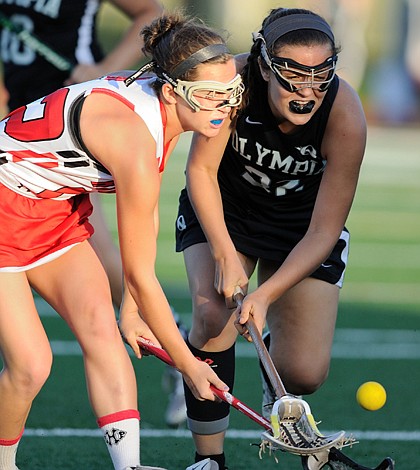- December 13, 2025
-
-
Loading

Loading

In the days since the Florida High School Athletic Association announced a helmet mandate for girls lacrosse effective for the 2015 spring season, the response from coaches, officials and players has been loud and clear — and overwhelmingly negative.
In its final meeting of the year, the FHSAA’s Board of Directors voted to mandate protective headgear in an effort to make the game safer.
The decision goes in direct contrast with the rule and policies of US Lacrosse, the sport’s overseeing national body, which only mandates protective eyewear but does not require helmets, although it allows them at the individual player’s discretion. It also went against the advisement of the FHSAA’s own lacrosse advisory board, which unanimously voted against the proposal on May 13.
With the board’s decision, Florida is currently the only state with such a mandate.
Since the announcement, US Lacrosse Vice President of Lacrosse Operations Ann Kitt-Carpenetti has penned an open letter to the FHSAA in which she strongly advises the board to reconsider and cautions “Athletes who are forced to wear headgear/helmets will play with a false sense of protection and may put themselves at greater risk of more serious types of head or other bodily injury.”
Moreover, US Lacrosse — which partners with the National Operating Committee on Standards for Athletic Equipment (NOCSAE) and American Society for Testing and Materials (ATSM) International — is frustrated with the governing body because they had been conducting their own research into the matter.
In the letter, Kitt-Carpenetti stated “The research tells us that while there are injuries in women’s lacrosse, the most prevalent injuries resulting in the greatest time loss are lower extremity injuries.
“Head injuries occur less frequently in women’s lacrosse than in girls’ soccer and concussions are seen more frequently in the helmeted and full-contact sports like men’s lacrosse, football and ice hockey. To date, there have been no reported catastrophic or severe brain injuries in girl’s lacrosse, and those are the types of injuries hard shell helmets have been designed to address.”
Still, despite US Lacrosse’s strong stand against the mandate — a stand echoed by coaches around in the state, as cited by several news reports since the announcement — the decision was made, much to the chagrin of local coaches such as West Orange’s Mary Hopkins.
“It was very surprising to go to the final board meeting and have them not listen to the coaches and officials advisory panel, not listen to the lacrosse advisory committee,” Hopkins, who is also a part of US Lacrosse’s hierarchy, said. “And then this last group of people … voted ‘yes’ to have helmets. …
“I’m sure that they have the best interest, but you have to make educated decisions and have hard data backing up the decisions you’re making. None of these people are involved in lacrosse or know the game of girls lacrosse.”
Highlighted among the resistance to the mandate is a concern that helmets will make
the game more aggressive and also, in doing so, change the way the game is played in Florida — putting Floridian girls at a disadvantage in terms of recruiting.
According to Hopkins, University of Florida coach Amanda O’Leary has expressed concern over her ability to recruit in-state talent if the mandate is upheld because of the fear that the game will change in its nature. According to The Gainesville Sun, O’Leary is strongly backing an online petition against the ruling that has more than 3,000 signatures.
US Lacrosse is hopeful to have a recommended form of protective headgear, likely a soft helmet or padded headband, available through its partnership with NOCSEA within the next year or so but has no plans to make it mandatory. The organization insists helmets be optional less the style of play should change in the game, and takes issue with some of the other rules the FHSAA has omitted that were put in place to help control the flow of the game and keep participants safe.
“Just let us finish what we’re doing because we’re way on top of this,” Hopkins said. “We [US Lacrosse] have an entire sport science and safety committee that are neurologists at Johns Hopkins Hospital, cardiologists at Princeton — big time people that are on this panel that constantly review this. …
“Things that we have put into the game so far have helped. FHSAA does not accept all of the US Lacrosse rules and so we also emphasized this year with the FHSAA that ‘if you think that the game is getting rougher, it’s because you took the rule out of the rulebook that we have put in place so that officials can control the flow of the game.’”
In her letter, Kitt-Carpenetti, in lieu of a helmet mandate, suggested the FHSAA allow her organization to conclude its findings and make an educated decision, while also strongly suggesting that the FHSAA adopt US Lacrosse’s training standards for coaches and officials — something she stated would make the game safer than the mandate.
“There are 139 public high schools that offer girls lacrosse and only 68 women’s lacrosse coaches at all levels and 180 women’s game officials that have received any standardized sport-specific training and certification by US Lacrosse,” Kitt-Carpenetti stated. “Clearly, there is more work that Florida coaches, officials and administrators need to do in order to demonstrate a meaningful commitment to player safety in girl’s lacrosse — before we consider an unproven mandated equipment intervention.”
The issue will likely be revisited in the fall as opposition — including tweets from current players expressing a refusal to play under the new rule — is unlikely to subside.
Hopkins shared her hope that the board would reconsider and allow more time for effective research to be presented and considered, but expressed concern that those responsible for the mandate may not be open to second thoughts.
“I think it’s going to be a pride issue at this point,” Hopkins said.